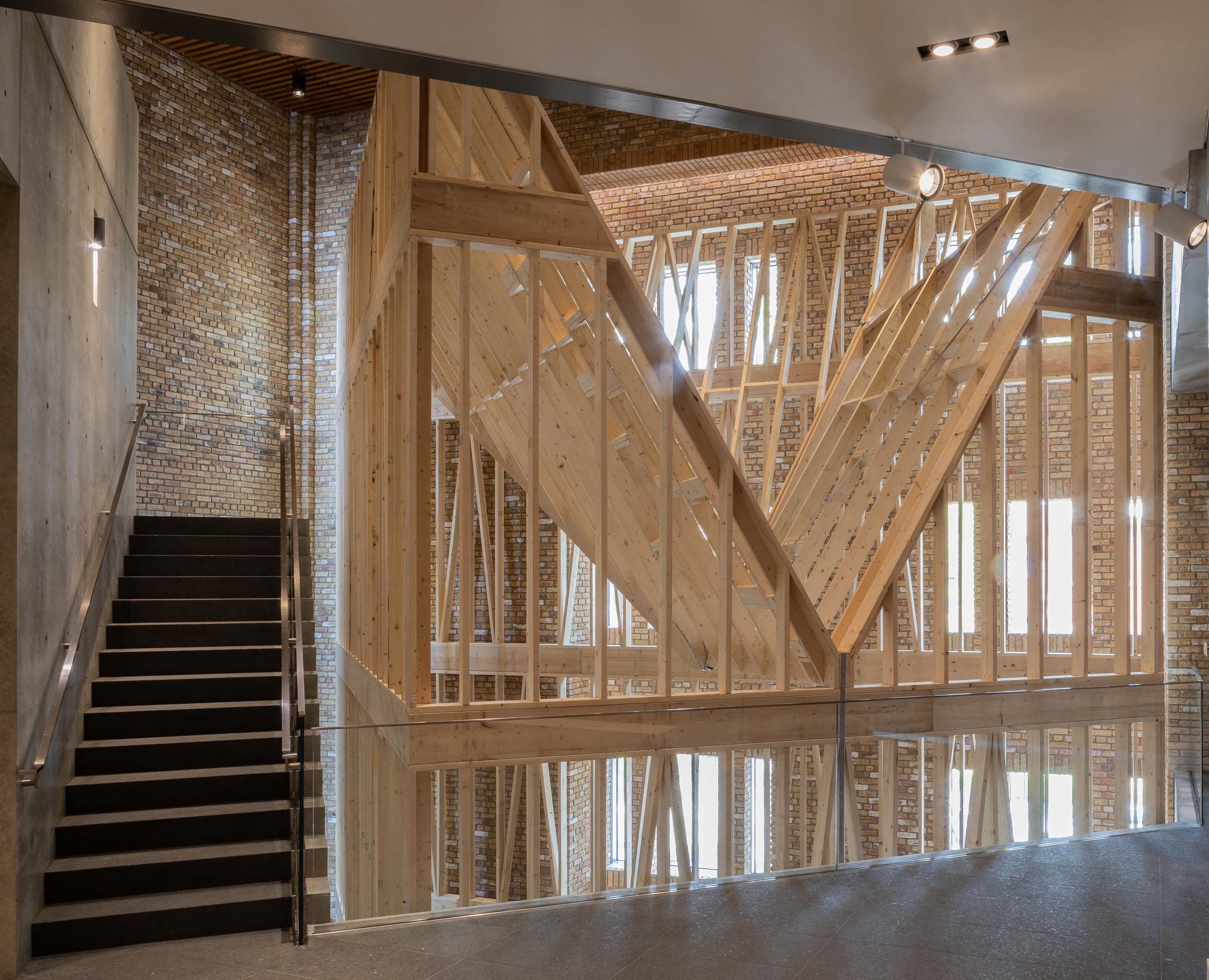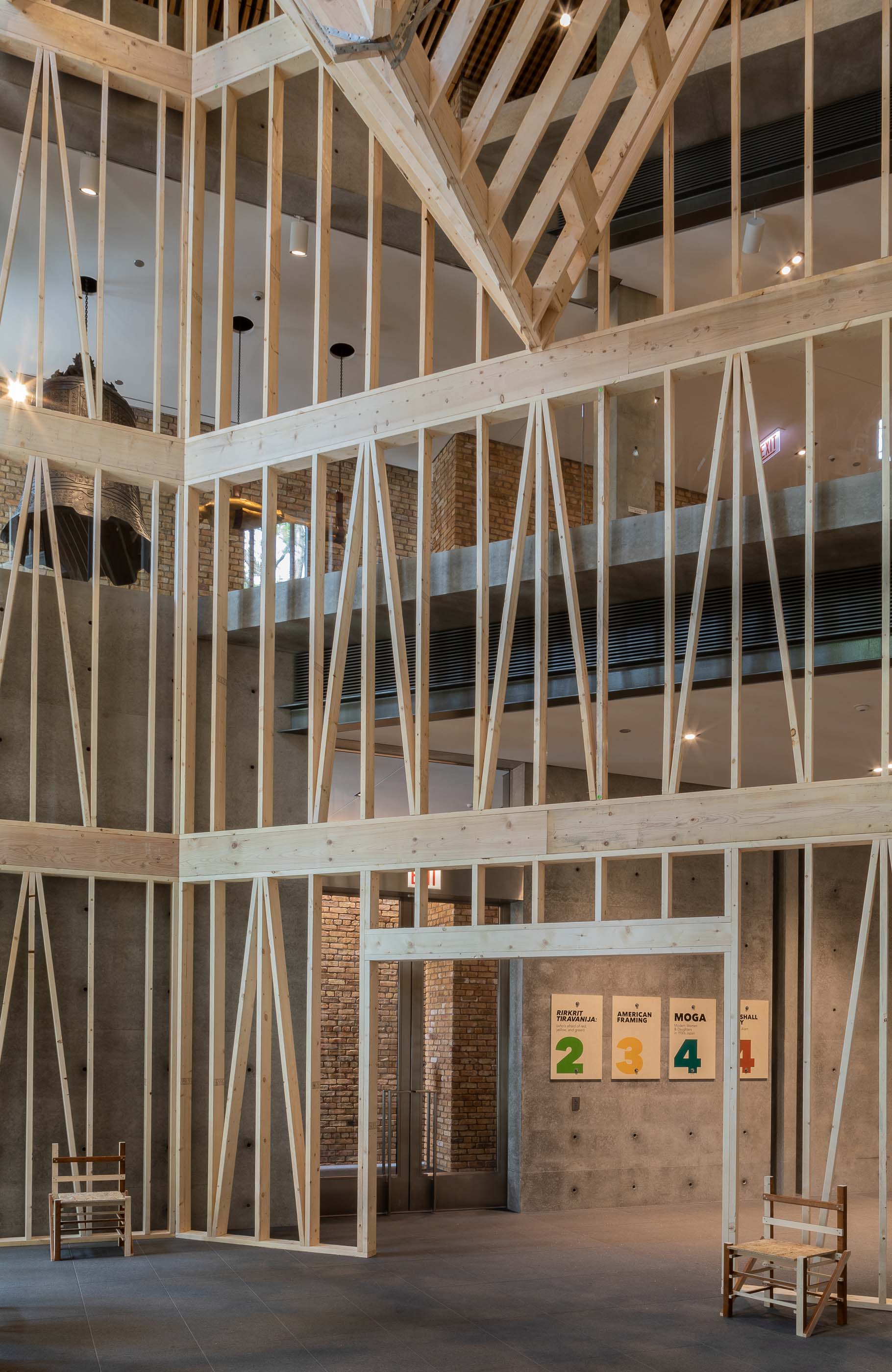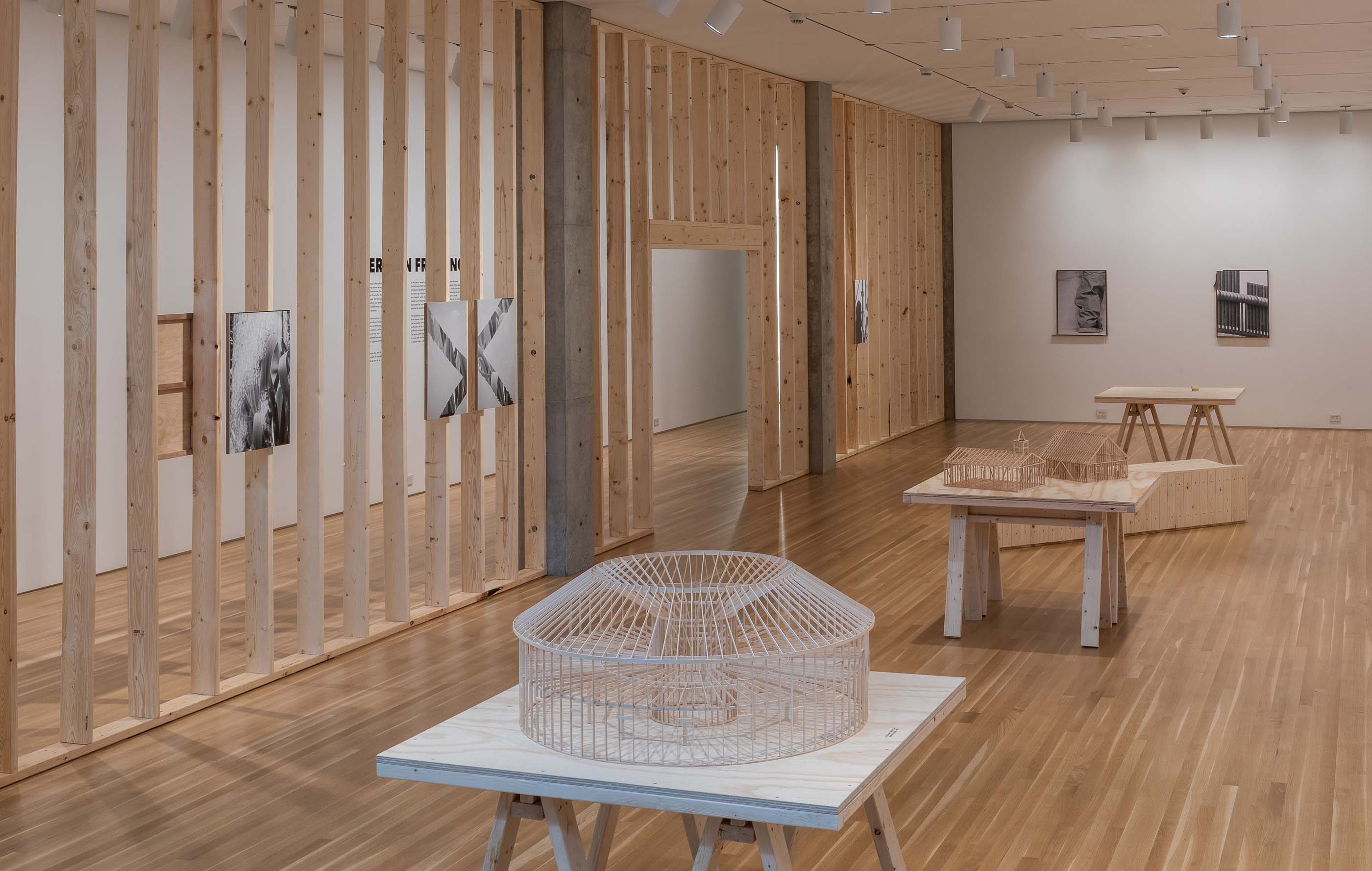American Framing
Wrightwood 659, Chicago | Open through July 30
I went to Wrightwood 659 to find America. Not like Paul Simon—it wasn’t a regional trek from Saginaw with Kathy. We can’t smoke on buses anymore, anyway. Instead, I boarded the 66 headed east and transferred to the 8 at Halstead to view an exhibition at the gallery: American Framing. The show was originally mounted last year as the Pavilion of the United States at the 17th Venice Architecture Biennale and afterward traveled (also not by Greyhound) to the Tadao Ando–designed gallery tucked away on Chicago’s North Side. (A version of the show was also on view earlier this year at the architecture-focused Galerie Jaroslava Fragnera in Prague.)
Curated by architects and professors Paul Andersen and Paul Preissner, American Framing revisits the architecture of wood framing as a distinctly American tradition. The straightforward concept is meant to bring to light an under-appreciated construction method that has been the literal backbone of American housing—“more than 90% of new homes in the US are wood framed,” the exhibition text declares—but instead I found an exhibition that, surprisingly, perfectly frames America.

Installed across two floors at Wrightwood 659, the exhibition begins in the first-floor atrium, where a three-story wood-framed construction fills the space with the scent of pine like a Home Depot lumber section. It also fully fills the three-story void itself: Ascending the impressive staircase provides a multidimensional view of the tower, and on the third floor, viewers get a top-down view of the concave pyramid “roofline.” From here, it becomes obvious that the tower is actually a colonial-style home with its roof inverted, pointing downward. It’s visually impressive, like a three-dimensional trompe l’oeil, a structure that is recognizably a “home” but has been morphed, gutted.

The exhibition continues in the third-floor gallery where one large room has been divided by wood framing, appearing like a home mid-rehab. Within the gallery are photographs by Daniel Shea that evoke “where wood comes from,” depicting natural landscapes and enlarged details from plant life and trees. But the images have been altered; some are blurred or overexposed, evoking a heavenly, ethereal sensation. In the middle of the room are small, infinitely fragile-looking wood models fabricated by students from the University of Illinois Chicago, where Andersen and Preissner teach. (In addition to this contribution, the school provided funding for the exhibition.) One, a model of the Jim Kaney Round Barn, is an example of balloon framing that dates from 1905. Also included are models of St. Mary’s Church in Chicago (1883) and the Jubilee in Levittown, Pennsylvania (1956). And, all by its little lonesome, is a model of Spike’s doghouse, instantly recognizable to those of us who grew up with Tom and Jerry.
Leaving the gallery space and moving into the adjacent corridor, one encounters photographs by Chris Strong. Unlike those by Shea, Strong’s photographs depict the construction process. The corridor features images of homes-in-progress; landscapes dotted by junked cars in remote, arid regions; and dramatic interiors showing wood frames supported by cross bracing, lit only through cracks between sheets of plywood. Following the hall, another small gallery hosts Strong’s images of laborers. At his recent virtual artist talk hosted by Wrightwood 659, Strong speculated on the lived realities of the workers he photographed. Some, he said, were part of unions, while others—likely undocumented day laborers—were not. The Amish, he said, were sort of their own unions, while elsewhere, “the Hispanic guy would be doing the work and a Caucasian guy with a clipboard would be walking around making sure they were doing it.”

The photographs make up the bulk of the exhibition. Initially I was baffled that there was so little text except for the exhibition description. All the photographs are untitled; only the photographers’ bios are displayed. It felt like I was missing something, until I realized that American Framing isn’t about making wood framing “visible.” It’s about what is hidden.
Some important context: Just an hour before my bus trip, the U.S. Supreme Court overturned Roe v. Wade, effectively stripping me and millions of others of their bodily autonomy. More than ever, I wanted to see America herself peeled of her robes. Go ahead, frame America for me, Pauls, I thought, cynically. And the curators did just that.
Those heavenly photos of trees and landscapes, as beautiful as they are, mask the reality of clear-cutting forests; heavy diesel machinery used to cut and process lumber; and, of course, the hard truth that all this is taking place on land that was violently stolen. The images of laborers, displaying grit and shot in natural light, speak nothing to the difficult and at times deadly working conditions of migrant labor: that white men with clipboards are protected by unions, while undocumented laborers are not. They don’t speak of the harsh reality that construction workers have the second-highest rate of suicide and, according to the CDC, 83 percent of those laborers have experienced a mental health issue. These are the skeletons of this country, simultaneously hidden from sight while also holding up the foundation of American life.

Though the small run of wall text describes wood framing as “democratic”—“no amount of money can buy you a better 2×4 than the 2×4s in the poorest neighborhood in town,” it says—it is, more specifically, an American ideology of hollow concealment. In America we hide our trash, our sick people, our exploitation, our elderly, our poor—and soon we’ll hide our lifesaving medical care. We scuttle stuff and people away; our good side, shining for the camera, doesn’t make the blemishes on the other disappear. American Framing is about just that: When we tear away the plaster, what remains are the studs. Here we are, mounting our pastoral photographs on soft wood laid bare.
Anjulie Rao is a Chicago-based critic and journalist covering the built environment.











